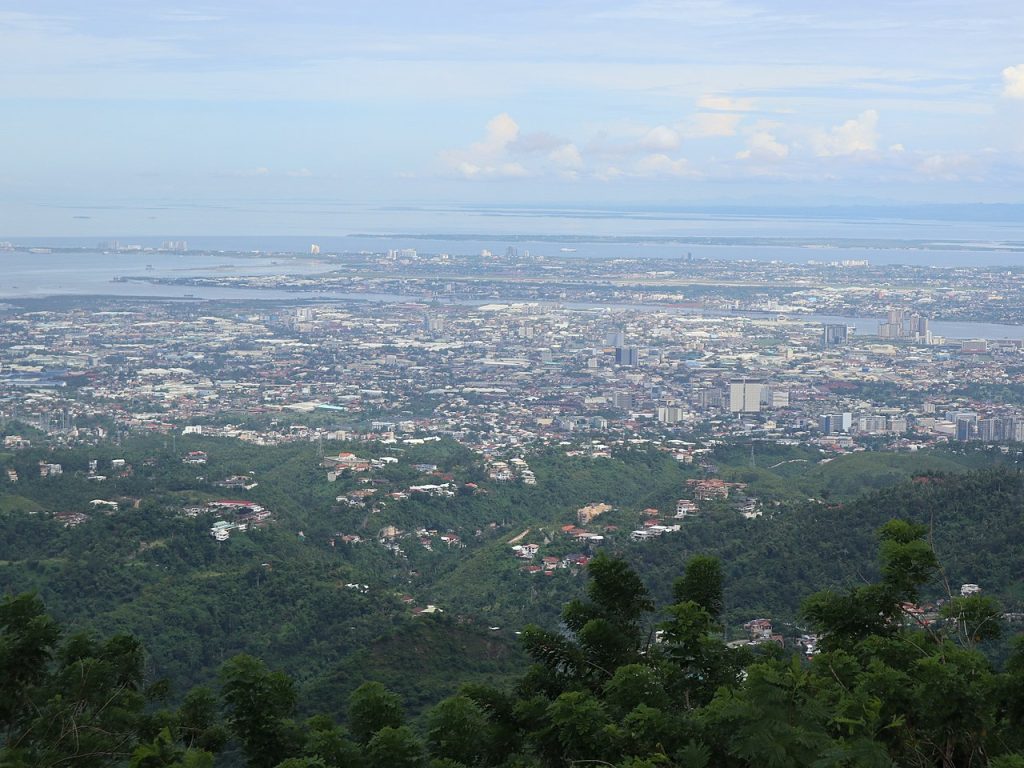
Mandaue, Mactan view from Tops Lookout by Patrickroque01
Discovering Mandaue: A Hidden Gem in Cebu
Nestled in the heart of Cebu Island, this highly urbanized city known as Mandaue is often overshadowed by its more popular neighbors, Cebu City and Lapu-Lapu City, which together make up Metro Cebu. Having only 27 barangays and with a 2020 population of 364,116-its land is 34.87 sq. kilometers or 13.46 sq. miles.
Mandaue is a vibrant hub with a rich cultural heritage, a bustling business scene, and a warm, welcoming spirit that makes it a must-visit destination for anyone exploring the central Visayas region.
A Brief History
Mandaue City, founded in 1599, is one of the oldest settlements in the Philippines, with a history that dates back to the pre-colonial period. It was originally inhabited by the Austronesian people and played a significant role as a trading post due to its strategic location along the Mactan Channel. Over the centuries, Mandaue evolved from a small fishing village into a major industrial and commercial center, earning its title as the “Furniture Capital of the Philippines.”
by Hiya ng Pilipinas
Industrial and Commercial Hub
Today, Mandaue City is known for its dynamic industrial sector. The city is home to various multinational companies, factories, and industrial parks that produce everything from furniture and construction materials to food products and electronics. The city’s economic growth is fueled by its strong manufacturing base, making it a crucial contributor to Cebu’s economy.
The vibrant business climate of Mandaue has attracted both local and foreign investors. Mandaue’s close proximity to the Mactan-Cebu International Airport and the Cebu International Port makes it an ideal gateway for trade, contributing to its reputation as a key economic player in the region.
by Empire Philippines
Cultural Landmarks
Mandaue City boasts a number of historical and cultural landmarks that reflect its rich heritage:
- National Shrine of Saint Joseph: One of the oldest churches in Cebu, this historic site is a center of spiritual and cultural activities. The shrine is dedicated to Saint Joseph, Mandaue’s patron saint, and is a focal point during the annual fiesta celebration.
- Mandaue Presidencia: Built in the early 20th century, the Mandaue Presidencia is an iconic example of American-era architecture in the Philippines. This well-preserved government building now serves as the city’s museum, showcasing artifacts that highlight Mandaue’s history.
- Heritage Plaza: Located in the city center, Heritage Plaza is a gathering place for locals and tourists alike. The plaza is adorned with statues and markers commemorating significant events in the city’s history.
Gastronomic Delights
Mandaue City offers a wide variety of culinary experiences that reflect the diverse flavors of Cebu. From local eateries serving traditional Cebuano dishes to international restaurants, the city’s food scene is vibrant and diverse. Some must-try delicacies include:
- Bibingka sa Mandaue: This unique rice cake is a local specialty made with finely ground rice, coconut milk, and topped with melted cheese. It is traditionally cooked in clay pots, giving it a distinct flavor.
- Lechon: While Cebu in general is famous for its roasted pig, Mandaue has its own spin on this beloved dish. The crispy skin and juicy meat make it a favorite at every fiesta and celebration.
by Binibining Cebu
Adventure and Leisure
For those seeking adventure, Mandaue City serves as a great starting point for exploring nearby attractions. Its central location allows easy access to the white-sand beaches of Mactan Island, the bustling city life of Cebu City, and the lush mountain landscapes in the north.
- Cansaga Bay: A lesser-known natural attraction, Cansaga Bay offers a peaceful retreat for bird watching and kayaking. It’s a great spot for nature lovers who want to escape the hustle and bustle of the city.
- Mandaue City Park: A well-maintained public space ideal for jogging, picnics, and family gatherings. It’s a perfect place to relax after a day of exploring.
Festivals and Celebrations
Mandaue City is also known for its vibrant festivals. The Mantawi Festival, celebrated in May, is a grand event showcasing the city’s culture and history. The festival features colorful street parades, cultural dances, and performances that highlight the city’s traditions and industrial achievements. The Sugat-Kabanhawan Festival, held during Holy Week, is another significant event that brings together the local community in celebration of faith and heritage.
Future Developments
Mandaue City is continuously evolving, with ongoing infrastructure projects aimed at improving connectivity and quality of life. The completion of the Cebu-Cordova Link Expressway (CCLEX) has enhanced accessibility to the city, making travel between Mandaue and other parts of Cebu easier than ever. Urban development projects are also in the works, aimed at creating more green spaces and modern facilities for residents and visitors alike.
by Visayas Top
Conclusion
Mandaue City is a vibrant, dynamic destination that seamlessly blends history, culture, industry, and modernity. Whether you are a business traveler, a foodie, or a history buff, Mandaue offers a unique experience that captures the spirit of Cebu. So the next time you find yourself in the heart of the Visayas, take some time to explore this hidden gem — you just might discover a new favorite spot in the Philippines.
Plan your visit to Mandaue today and experience the charm of a city that is constantly moving forward while staying rooted in its rich past.